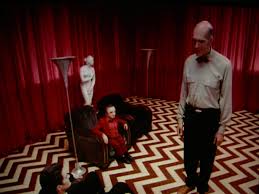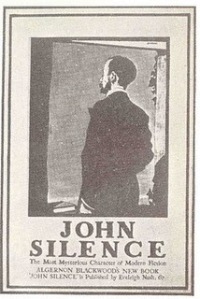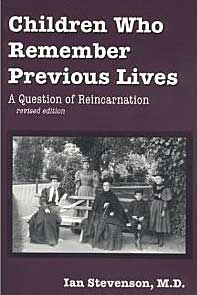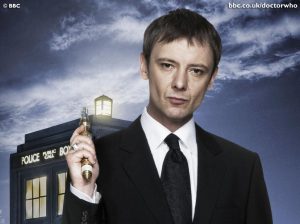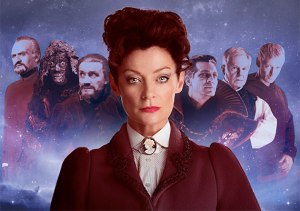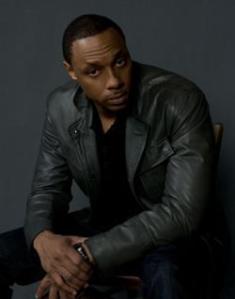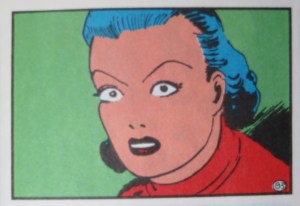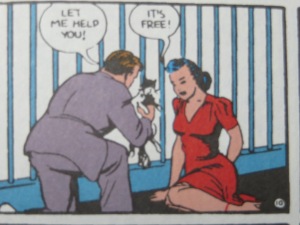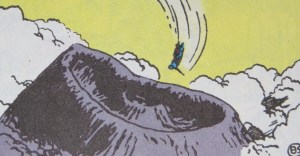It’s hard to believe, but The X-Files is returning to Fox. The six-episode mini-series starts shooting this summer. And Twin Peaks, another dead show about paranormal investigators, is being reincarnated by Showtime.
Why are occult detectives back in fashion? I think Scully’s M.D. makes her more qualified than either Agent Mulder or Agent Cooper. Remember the episode when she gets abducted by aliens? The scene was shot in Vancouver, but they pretended it was Afton, Virginia—which does not have a funicular. I know because I used to drive over the Blue Ridge Mountains to the University of Virginia’s Creative Writing Department three days a week, unaware that the university also housed a Division of Perceptual Studies. Its founder, Dr. Ian P. Stevenson, died a few months after I finished my MFA.
Given his research area, I feel I should place an asterisk next to “died,” but his colleagues have yet to report evidence of his afterlife activities. Dr. Stevenson had been a full-time paranormal researcher since 1968 when philanthropist Chester Carlson, inventor of the Xerox machine, willed UVa’s medical school a grant to open DoPS. So, yes, the world’s only university-based researcher of reincarnation was funded by photocopiers.
If a medical school seems on odd place to find a psychical investigator, you should know that Scully comes from a long tradition of occult detectives with MDs. World-renown surgeon Stephen Strange abandoned his scalpels for astral projection, in 1963, two years after Dr. Droom entered “that dark and mystical world which lies beyond the known and the unknown!” Dr. Stevenson visited India in 1961 too, to document his first of almost 3,000 cases of past-life memories. Stevenson was still finishing high school when Superman co-creators Siegel and Shuster dreamed up the first comic book occult physician, aptly named Dr. Occult. But Algernon Blackwood’s 1908 Dr. Silence is the first general practitioner to accept the superhero job title “psychic doctor.”
If a medical degree doesn’t sound sufficiently superheroic, then you need to see Hugh Jackman in Van Helsing—or wait for the Tom Cruise reboot, if it ever escapes from development hell. All these Hippocratic Oath-swearing healthcare professionals also reveal the superhero genre’s most important superpower. Sure, X-ray vision would be handy when diagnosing, and what doctor couldn’t use telekinesis in the O.R.? But despite all those fist-thrown Ka-Pows! and bone-bashing kicks, the number one superhero trait is kindness.
When told he won’t be paid to treat the dying Llama, Droom answers: “I can’t refuse to treat a sick man! If I must, I’ll treat him for nothing!”And so he’s rewarded because: “Only a charitable, self-sacrificing human would have done so!” Dr. Silence also takes “no fees, being at heart a genuine philanthropist.” His wealthy friends are “puzzled” that he “should devote his time” not just to doctoring but “chiefly doctoring folk who could not pay.” He poses the “native nobility of a soul whose first desire was to help those who could not help themselves.”
This Hippocratic philanthropy extends to monsters too. Dr. Van Helsing can “pity” and “weep” for vampires during his “butchery” of their bodies, imagining Dracula’s “joy” when “his better part may have spiritual immortality.” When Dr. Silence faces an Egyptian fire spirit wrongly “torn from its ancient resting-place” and brought to England where it exacts revenge, he feels more for the mummy than its wealthy looters. He later worries about the well-being of a werewolf, a condition he terms an “infirmity,” rare but also “often very sad.” He has no enemies, only patients. Though the ghost of a witch is beyond his help, he transmutes the “evil forces” she left behind “by raising them into higher channels.” He doesn’t destroy evil—he cures it.
Unlike the vampire-hunting Drs. Van Helsing and Hesselius, Silence has actual superpowers, making him the first superman to leap beyond the comparatively mundane realm of superhuman strength. He would be an ideal subject for Dr. Stevenson’s studies in extrasensory perception. Not only does he posses the “power almost to see in the dark,” “that special sensibility that is said to develop in the blind—the sense of obstacles,” but “his psychic apparatus never failed in letting him know the proximity of an incarnate or discarnate being.” His Watson-like narrator also wonders if he has “some secret telepathic method by which he knew my circumstances and gauged the degree of my need,” a power that also “saw into the future.”
These powers don’t come from enchanted artifacts or mutating radiation. His magic isn’t magic. It’s an extension of his “humanity,” his “spiritual sympathy.” He can “absorb evil radiations into himself and change them magically into his own good purposes” because he’s just an incredibly nice guy. He’s not just sensitive, he’s “ultra-sensitive.” “Thought-reading” just requires paying attention to and caring deeply about other people. And since “suffering always owns my sympathy,” of course he’s going to dedicate his life to helping them.
Dr. Stevenson kept a list of the books he read that numbered over 3,535. I’m sure it includes some of the same “Yoga books” Dr. Silence admires, the ones arguing “the necessity of man loving his neighbors as himself” because, says Silence, “men are doubtless not separate at all.” Stevenson achieved that interconnected state of “perfect serenity” though the “mystical experience” of LSD, but whatever its source, he and Silence had the same goal, the same desire for “peace and quietness.”
Usually that means putting the past and present back into balance. “Ancient pasts” and “ancient instincts” have a way of rising in Blackwood tales. Stevenson traveled the world to study the same phenomena, writing a 2,268-page monograph on past-life memories, including 200 “in which highly unusual birthmarks or birth defects of the child corresponded with marks, usually fatal wounds, on the previous person.”
Silence’s filing cabinet is considerably smaller. He vanished in 1917, after Blackwood published his sixth and final case study. Given that John Silence, Physician Extraordinary was a breakout best-seller that let the author quit his day job, it’s weird the doctor never came back. Maybe Silence has just been waiting for his favorite shows to return to TV in time for the 100th anniversary of his last publication?
Or maybe he was abducted? Those X-Files aliens returned Gillian Anderson after her maternity leave and Buddhist wedding. Blackwood and Chester Carlson were students of Buddhism too and firm believers in reincarnation. I’m more of a Dr. Scully myself. Though I try to be sympathetically open-minded.


